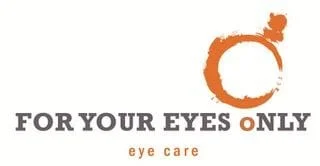
Introduction
Myopia, commonly known as nearsightedness, is a prevalent refractive error that affects millions of people worldwide. Individuals with myopia experience difficulty seeing distant objects clearly while maintaining relatively clear vision for close-up tasks. This condition has become increasingly prevalent in recent years, particularly among younger populations. In this comprehensive guide, we will explore the causes, symptoms, management options, and potential interventions for myopia.
Understanding Myopia
Myopia is a refractive error characterized by the elongation of the eyeball or an overly curved cornea, leading to the focal point of light falling in front of the retina rather than directly on it. This results in blurred distance vision while close-up vision remains relatively unaffected. Myopia typically manifests during childhood or adolescence and may progress over time.
Causes and Risk Factors
The exact cause of myopia is multifactorial, influenced by both genetic and environmental factors. Genetics play a significant role, with individuals having myopic parents being more likely to develop myopia themselves. Environmental factors such as excessive near work (reading, screen time), limited outdoor activities, and prolonged near focusing contribute to myopia development and progression.
Symptoms and Diagnosis
The primary symptom of myopia is difficulty seeing distant objects clearly, which may lead to squinting, eye strain, headaches, and fatigue. Myopia can be diagnosed through a comprehensive eye examination conducted by an optometrist or ophthalmologist. Visual acuity tests, refraction measurements, and an evaluation of the eye's structures and health are performed to determine the extent of myopia.
Management and Treatment Options
a. Corrective Lenses: The most common approach to managing myopia is through the use of corrective lenses, such as glasses or contact lenses. These lenses help to refocus light onto the retina, providing clear vision.
b. Orthokeratology (OrthoK): OrthoK offers a non-surgical option for myopia management. Specialized gas-permeable contact lenses are worn during sleep, gently reshaping the cornea to correct refractive errors. OrthoK provides clear vision during the day without the need for glasses or contacts.
c. Multifocal Contact Lenses: These lenses have different zones for near and distance vision, helping to slow down myopia progression by reducing near-focusing demands.
d. Atropine Eye Drops: Low-dose atropine eye drops have shown promise in controlling myopia progression. They work by relaxing the focusing mechanism of the eye, thereby reducing eye elongation.
e. Lifestyle Modifications: Encouraging outdoor activities and reducing excessive near-work may help slow down the progression of myopia.
Future Interventions and Research
Ongoing research focuses on developing innovative interventions to address myopia. This includes pharmaceutical agents, specialized contact lenses, and advanced surgical procedures. Additionally, studies are exploring the role of genetics in myopia development, paving the way for personalized treatment approaches.
Conclusion
Myopia, or nearsightedness, is a common refractive error that affects many individuals. Understanding its causes, symptoms, and management options is crucial for those living with myopia. With advancements in corrective lenses, OrthoK, multifocal contacts, and emerging interventions, managing myopia and slowing its progression are achievable goals. Regular eye examinations, early intervention, and adopting healthy visual habits can play a significant role in preserving clear vision and reducing the impact of myopia. If you suspect you or your child may have myopia, consult an eye care professional for a comprehensive evaluation and personalized treatment plan.
